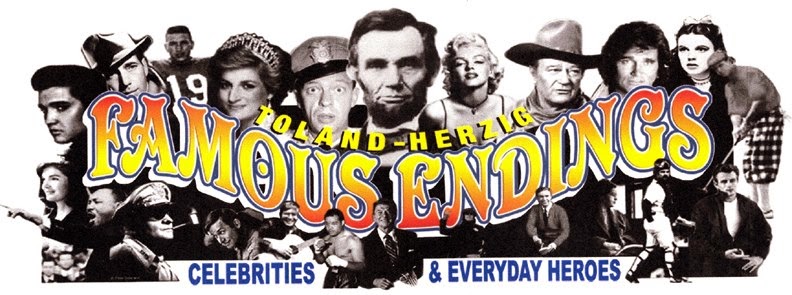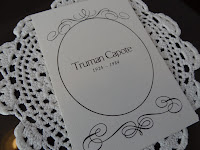If you were asked to name a modern day pioneer-who would it be?
My answer, without a doubt, would be "the first man to walk on the moon."

Neil Armstrong was born in a small town in Ohio by the name of Wapakoneta and because of his father's job as a state auditor, Neil moved and lived in nearly twenty towns growing up before returning to Wapakoneta. Neil's interest in flying began at an early age when his dad took him to the Cleveland Air Races. He took his first airplane ride at the age of 5 in Warren, Ohio on a "Tin Goose." He began taking flying lessons during his school years at Blume High School and earned his flying certificate at the age of 15 (before he had his driver's license). He was always driven to be the best he could be as evidenced by his earning the "Eagle Scout" award and the Boy Scouts remained important to him throughout his life.
Neil began studying aeronautical engineering at the age of 17 and following high school, he enrolled in Purdue University to continue his studies. He received his bachelors degree and continued his education at the University of Southern California where he received his master of science in Aerospace Engineering. Years later he earned honorary doctorate degrees from both of those universities.
Neil entered the U.S. Navy in 1949 and received flight training during which he qualified for carrier landing aboard the USS Cabot and USS Wright and became a fully qualified Naval Aviator in 1950. During the Korean War, Armstrong flew 78 missions. Armstrong also spent time as a test pilot and found himself in many risky situations over those years.
In 1958, he was selected for the U.S. Air Force's "Man in Space Soonest" program. He became more and more interested in the future space program and four years later was asked to be a part of the NASA Astronaut Corps and was among the "New Nine" He then became backup commander for Apollo 8 and on Dec. 23, 1968, Deke Slayton asked Armstrong to be the commander of Apollo 11 and in March 1969 at private meeting, it was determined that Armstrong would be the first person to walk on the moon.

He set the first step on the moon on July 21, 1969 and would soon speak those famous, yet unprepared words "That's one small step for man and one giant leap for mankind." It has been said that the quote was broadcast through "Voice of America" to nearly 450 million listeners. Soon to follow was that molded image of the placing of the American flag on the moon's surface.
Following Armstrong's retirement from NASA in 1971, he did some television commercials and was a spokesman for several businesses. He also served on the board of directors of several corporations. He was a voice actor for the character of "Dr. Jack Morrow" in Quantum Quest, a science fiction animated film. He was also an instructor at the Dept. of Aerospace Engineering at the University of Cincinnati.
Although Neil Armstrong was one of the most famous people in history, he was a very humble and down to earth man. He refused to sign autographs and was sometimes called the "Reluctant American Hero."
 |
| Wink at the Moon service |
He developed a serious heart condition and underwent bypass surgery on August 7, 2012 to relieve blocked coronary arteries. He died of complications from the surgery on August 25, 2012 and his death was announced to a "shocked nation."
On the following days and weeks, a number of tributes were held in his honor including a private memorial at the Camargo Club in Cincinnati on Aug. 31, 2012. A tribute was held two days following his death on August 27
 |
| From Purdue memorial |
at his Alma Mater, Purdue University. Those in attendance received a poster (pictured.)
A memorial service was held in his hometown of Wapakoneta that was coined "Wink at the Moon"(program pictured) that came from the family's statement released at his death "For those who may ask what they can do to honor Neil, we have a simple request "Honor his example of service, accomplishment and modesty, and the next time you walk outside on a clear night and see the Moon smiling down at you, think of Neil Armstrong and give him a wink."
Among those who participated was Astronaut John Glenn.
 |
| Prayer card |
 |
| Washington Cathedral |
A public memorial (program pictured) to Neil took place on September 13, 2012 in Washington D.C. at the Washington Cathedral. Among those who spoke was the last person to walk on the moon, Astronaut Eugene Cernan who said of him "He embodied all that is good and all that is great about America. Neil, wherever you are, you again have shown us a way to the stars. As you soar through the heavens where even eagles dare not go, you can now truly put out your hand and touch the face of God." Hundreds waited in line to witness the memorial. The Navy choir sung "Eternal Father Strong to Save" and Grammy winning jazz artist, Diana Krail sung Sinatra's "Fly Me to the Moon."
 |
| Memorial in Washington DC |
Following cremation, Neil Armstrong's ashes were committed to the Atlantic Ocean on September 14, 2012 in accordance with the Navy Flier's wishes. Neil's family and a few close friends along with members of the Navy aboard the Navy missile cruiser "Philippine Sea" attended the ceremony off the shores of Florida.
 |
| Committal service aboard the Philippine Sea |
 His first movie role was in a small 1973 film, "Class of 44 and continued to appear on other low budget films during the 1970's including a film "Silent Partner" with Elliott Gould and Christopher Plummer. He was also a member of Toronto's "The Second City" where he continued to gain North American popularity as a cast member of the comedy variety show "Second City Television" and won Emmy awards for the show's writing in 1981 and 82. Candy was great at impersonations including Jerry Mathers "The Beaver" "Jimmy the Greek" Richard Burton, and Jackie Gleason along with several others.
His first movie role was in a small 1973 film, "Class of 44 and continued to appear on other low budget films during the 1970's including a film "Silent Partner" with Elliott Gould and Christopher Plummer. He was also a member of Toronto's "The Second City" where he continued to gain North American popularity as a cast member of the comedy variety show "Second City Television" and won Emmy awards for the show's writing in 1981 and 82. Candy was great at impersonations including Jerry Mathers "The Beaver" "Jimmy the Greek" Richard Burton, and Jackie Gleason along with several others. 









































.JPG)










